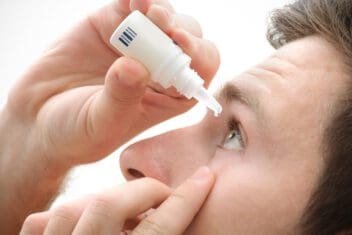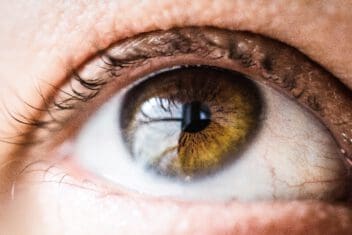
Medically Reviewed by Philina Yee, M.D.
Eye Drops for Glaucoma: What Works Best?
Home / Diagnosed With Glaucoma /
Last Updated:

Medically Reviewed by Philina Yee, M.D.
There are several different types of eye drops for glaucoma, which are classified by their active ingredient. These eye drops either reduce the amount of fluid your eyes produce or help to drain the fluid. Both help to lower the pressure in your eyes.
The main goal of glaucoma eye drops is to lower the pressure in your eyes to protect your optic nerve. These eye drops are available by prescription only. Using eye drops for glaucoma daily can help to preserve your vision and keep your glaucoma from progressing.
In this article, we’ll examine the different types of eye drops for glaucoma and look at the benefits and side effects of each.
Types of Glaucoma Eye Drops

are separated based on their main active ingredient. There are several different classes of prescription eye drops for glaucoma.You may have to try a few different types of eye drops before settling on the one that is ideal for you. Combination medications can also be beneficial. The best eye drops will successfully keep the pressure in your eyes low enough to prevent damage to your optic nerve.
Your eye doctor can determine the best eye drops for you specifically, based on your health history, other conditions, or medications you are taking.
You deserve clear vision. We can help.
With 135+ locations and over 2.5 million procedures performed, our board-certified eye surgeons deliver results you can trust. Your journey to better vision starts here.
Common eye drops for glaucoma include:
Prostaglandin analogs
Lumigan (bimatoprost), Xalatan (latanoprost), Zioptan (tafluprost), Travatan Z (travoprost)
Beta blockers
Betimol, Timoptic, Istalol (timolol), Betoptic (betaxolol)
Carbonic anhydrase inhibitors
Azopt (brinzolamide), Trusopt (dorzolamide)
Alpha-adrenergic agonists
Lopidine (apraclonidine), Alphagan P, Qoliana (brimonidine)
Rho-kinase inhibitors
Rhopressa (netarsudil)
Miotic or cholinergic agents
Isopto Carpine (pilocarpine)
Nitric oxides
Vyzulta (latanoprostene bunod)
Combined medications
Cosopt and Cosopt PF (timolol and dorzolamide), Simbrinza (brimonidine and brinzolamide), Combigan (timolol and brimonidine)
How Eye Drops for Glaucoma Work
Glaucoma eye drops are effective at controlling your intraocular pressure (IOP) if you take them exactly as directed. You need to put them directly into your eyes up to four times every day.
These medications work in one of two ways to control the pressure in your eyes. They either:
- Help the fluid in your eyes drain more effectively, or
- Keep your eyes from producing as much fluid.
Both of these methods help to lower IOP.
Prostaglandin analogs, nitric oxides, Rho kinase inhibitors, and miotic or cholinergic agents increase fluid drainage. Beta blockers, alpha-adrenergic agonists, and carbonic anhydrase inhibitors lower fluid production.
Pros & Cons of Glaucoma Eye Drops

Many forms of eye drops for glaucoma can have systemic side effects, meaning they can impact your entire bodily system. Eye drops are placed topically into the eye, but they still enter your bloodstream this way.
Potential side effects of glaucoma eye drops may include:
- Blurry vision
- Dry mouth
- Headache
- Changes in eye color
- Eye irritation, including stinging, burning, itching, and/or redness
- Fatigue
- Drowsiness
- Lower blood pressure and heart rate
- Shortness of breath
- Decreased night vision
- Allergic reaction
Eye drops that contain preservatives can have toxic effects on your eyes. As a result, preservative-free eye drops are often a better option.
Glaucoma eye drops need to be used every day to keep eye pressure down. Often, they must be used several times per day. When used correctly, eye drops can be very effective at regulating eye pressure and therefore preserving your vision.
As we’ve seen, there are many options for eye drops that control IOP. For glaucoma treatment, eye drops are considered the front-line treatment option. Occasionally, you may need to also take oral medications in conjunction with eye drops.
Talk to your eye doctor to find your ideal course of action for managing glaucoma.
You deserve clear vision. We can help.
With 135+ locations and over 2.5 million procedures performed, our board-certified eye surgeons deliver results you can trust. Your journey to better vision starts here.
References
- What Is Glaucoma? (October 2020). American Academy of Ophthalmology (AAO).
- Glaucoma Medications. (June 2019). National Eye Institute (NEI).
- Glaucoma Medications and Their Side Effects. (July 2018). Glaucoma Research Foundation.
- An Eye on Glaucoma Drugs. (August 2018). Harvard University.
- Glaucoma Therapy: Preservative-Free for All? (April 2018). Clinical Ophthalmology.
- A Guide to Applying IOP-Lowering Drugs. (July 2018). Review of Optometry.

Dr. Yee is a glaucoma specialist trained in the medical and surgical management of glaucoma. She also provides comprehensive ophthalmological services for adolescents and adults.
This content is for informational purposes only. It may have been reviewed by a licensed physician, but is not intended to serve as a substitute for professional medical advice. Always consult your healthcare provider with any health concerns. For more, read our Privacy Policy and Editorial Policy.